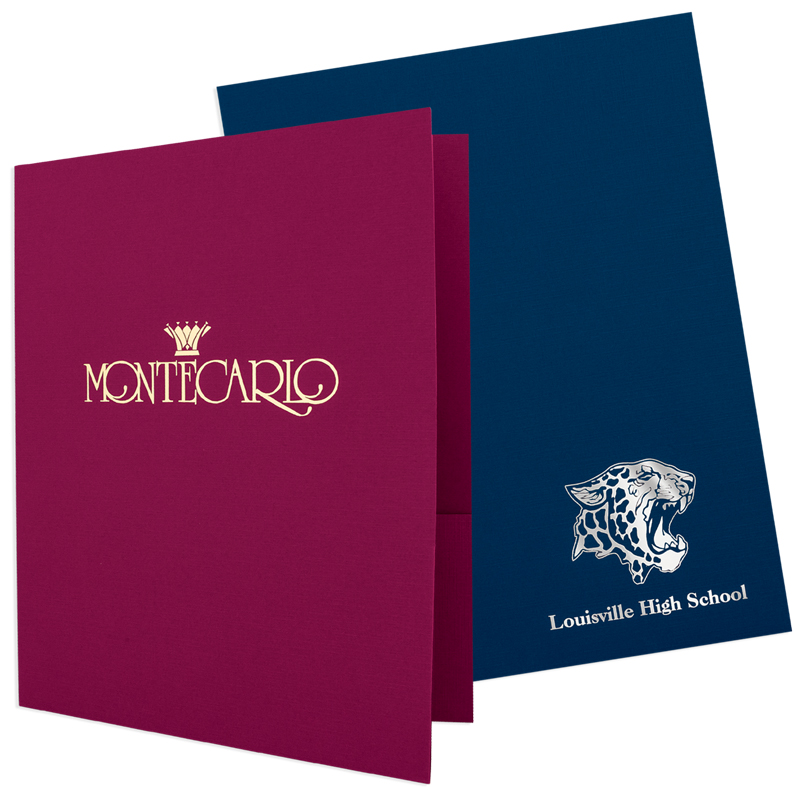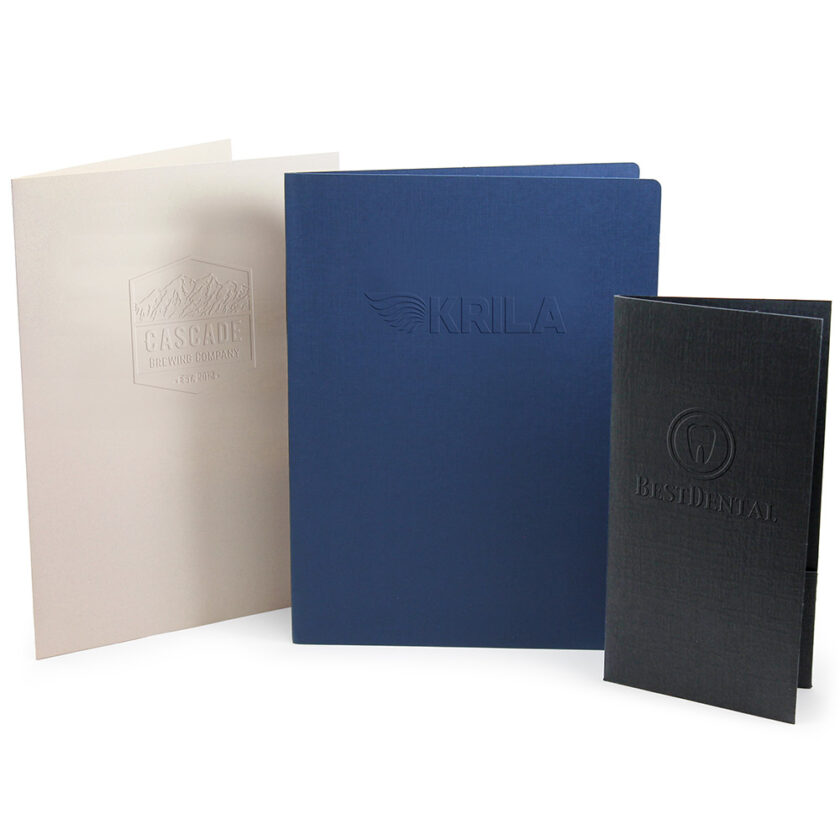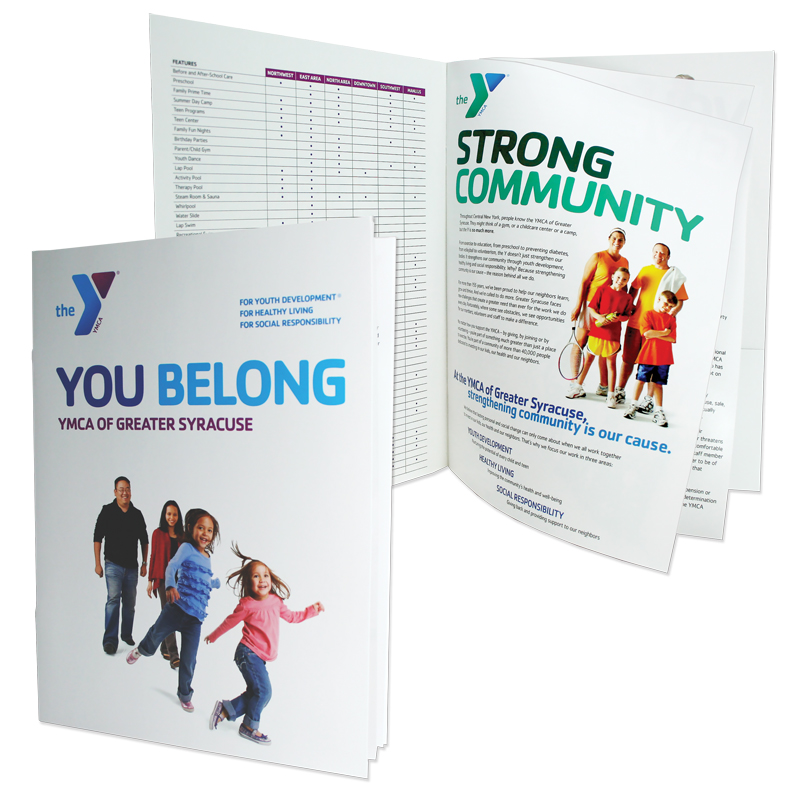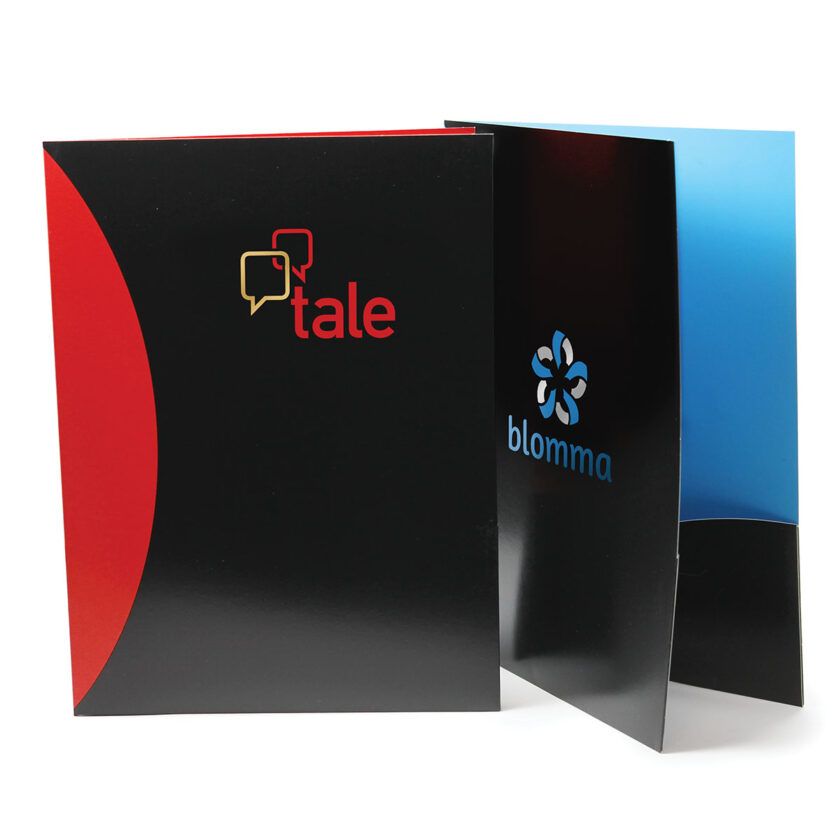Key Takeaways
• Full-color printing, soft-touch textures, and creative finishes like embossing and ombré effects are transforming traditional folders and brochures into modern, eye-catching marketing tools.
• While standard sizes remain popular for ease and efficiency, there’s growing demand for unique formats—like multimedia folders, stitched inserts, and certificate holders—that cater to specific industries and events.
• Distributors are encouraged to pitch folders and brochures to “hidden verticals” such as real estate, education, and healthcare. These sectors often need professional presentation materials but may not be top-of-mind for print sellers.
There’s a phrase you might have heard: “You can’t build a better mousetrap.” What it means is that essentially some products or services or ideas are already perfect and can’t be improved upon. In the world of folders, it’s natural to think that all innovation and product development has been done already. You can’t build a better folder, so to speak.
But that’s far from the case. While the idea of a simple 8.5-inch by 11-inch folder with pockets is certainly the gold standard, it’s not the only design that distributors should keep in mind when selling print folders to their customers. The same goes for brochures, too. A full-color trifold brochure is a classic for a reason, but there are ways to quite literally fit folders and brochures into a vast array of promotional campaigns and applications.
Get Colorful
Think about what a folder is, what it’s there for. It’s more than just keeping papers organized. Yes, we all learned how important they were after our teachers in elementary school scolded us for having messy desks full of loose papers (or was that just me?), but a folder is often what attracts an end-user to everything inside. The same goes for a brochure. It needs to be designed in such a way that it attracts the eye.
“We’re seeing a lot more full-color printing, that’s for sure,” says Aaron Kist, senior account manager and marketing consultant for Counselor Top 40 distributor and Print & Promo Marketing Top 20 print distributor American Solutions for Business (asi/120075).

Specifically, Kist sees a lot of his customers opt for full-color photos for the cover, whether it be a business showcasing its employee team or a children’s hospital featuring images of kids.
“It just makes them more personal than just dropping the name of the hospital or university,” he says. “It’s more modern advertising than the old drop-a-logo-in-the-corner, which, of course, is still popular. But there’s a lot more photo work going on.”
Texture and Substrate
In terms of the substrate itself, Kist says that printers and distributors don’t need to reinvent the wheel. He would definitely recommend going gloss over flat if you’re using a photo. For other uses, such as for financial institutions that need to give off an air of professionalism and stability, Kist recommends textured stock to tell the story through feel when choosing not to feature full-color or photos.
Phil Martin, national sales manager for Warwick Publishing Co. (asi/95280) says that he’s noticed an uptick in soft-touch folders. “It’s probably the biggest thing,” he says. “People like that velvet feel that you get with a soft-touch folder. That can be done via paper or through coating. We actually do it through a coating after it’s printed as part of the printing process.”

Warwick also sells presentation folders that use texture as the decoration through methods like embossing, where the tone-on-tone logo placement has an upscale and luxury look to it.
Folders and brochures are good print products for distributors looking to add print to their business because they don’t change much year over year like a tech product or an apparel piece that might fall out of fashion in a year.
“The appeal is in the simplicity,” says Jennifer Jaworski, sales service and marketing manager for Admore (asi/32050). “Customers don’t want to face an overwhelming list of paper stocks or coatings – just the most popular options with shipping included.”
Size & Shape
When the simplicity is such a big part of the appeal, you’re generally safe to mostly stick to the tried-and-true standard sizes. Jaworski usually points distributors toward Admore’s Economy Quick-Ship folder line, all of which come in a standard size that appeals to a variety of end-buyers and applications.
“We offer 10 products in this line, all based on the classic 9-inch by 12-inch folder design with two pockets and a standard business card slot,” she says. “Compared to our full product line, which can feel complex, these folders are designed to be quick, easy and stress-free.”

That said, there are ways to play with design for specific purposes and clientele. Admore features a variety of styles including file folders and covers with top openings for certificates, paper binders, photo holders and folders that hold multimedia devices like discs or flash drives, and more. For brochures, they have standard booklets, stepped inserts with a tiered information design or stitched inserts.
“Customers sometimes forget that folders don’t have to be the standard two-pocket style,” Jaworski says. “We’re seeing a trend toward folder styles that stand out because they aren’t the ‘usual folder.’”
In the Fold
The power of a folder as a promotional product is its appeal across customer verticals and the possibility of integrating them into larger campaigns.
Martin says that one of the greatest tools in the distributor’s arsenal is “Oh, by the way.”
“Oh, by the way, do you guys use folders?” he says. “Does your HR department use pocket folders? Do you have a sales division? Do they use pocket folders? If it’s a college or university, you have an enrollment division when you’re recruiting. You would be surprised how much business is out there.”
He says you might also be surprised at how many potential end-buyer customers realize at the eleventh hour that they need folders and run out to an office supply store and slap on a printed label instead of getting branded folders.
“Which is ridiculous,” he says.
Instead, when you’re selling other items like apparel or promotional products, ask clients about their folder situation. It can be in the medical vertical, law offices, human resources departments and education. In short, if they’re handing out information, they can use folders and brochures.
“There’s a lot of business out there to be had, and it’s just a matter of asking and carrying some samples with you. People are out there,” Martin says. “‘No one’s using paper anymore. It’s electronic.’ Not necessarily.”
Jaworski says that some customers fall into a category of print buyers that she calls “hidden verticals,” meaning buyers that often need print but aren’t top of mind for distributors. Many are in the larger real estate market.

“There are opportunities with property management companies, home inspection services, closing portfolios, lease agreements, vacation rentals and homeowner associations, all of which need professional presentation materials,” she says. “These hidden verticals can be surprisingly profitable once distributors start pitching to them.”



